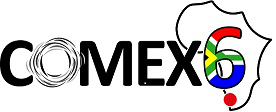Speaker
Description
In recent times, considerable progress has been made in the understanding of isospin nature of the pygmy dipole excitation both experimentally and theoretically. On experimental side, this has been due to advancement of techniques which now make it possible to compare the excitation pattern by probes of different isospin nature [1].
In this conference, we present results of such comparative study done on the pygmy dipole excitation in 74Ge. The pygmy dipole states built on the ground state are excited by the inelastic alpha scattering. The excitation pattern thus observed is compared to that of observed in the photon scattering done on the same nucleus [2]. Experiment for the 74Ge(alpha,alpha')74Ge' reaction was done with the AFRODITE array and a set of two identical charged particle telescopes of square silicon detectors [3]. The results show the presence of two energy regions between 6 to 9 MeV, which adhere to the scenario of the recently found splitting of the region of dipole excitations into two separated parts: one at low energy, being populated by both isoscalar and isovector probes, and the other at high energy, excited only by the electromagnetic probe. Relativistic quasiparticle time blocking approximation (RQTBA) calculations show a reduction in the isoscalar E1 strength with an increase in excitation energy, which is consistent with the measurement. This study may be the first step to learn more about the relation between isospin-splitting and neutron skin.
REFERENCES
[1] D. Savran et al., Phys. Rev. Letts 97, 172502 (2006) .
[2] R. Massarczyk et al., Phys. Rev. C 92, 044309 (2015).
[3] D. Negi et al., Phys. Rev. C 94, 024322 (2016).

